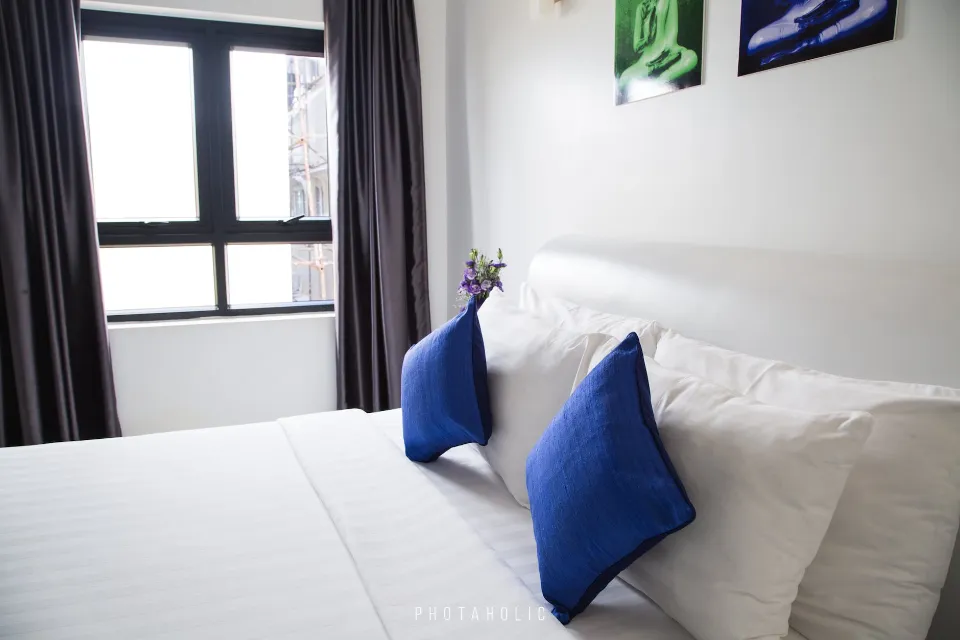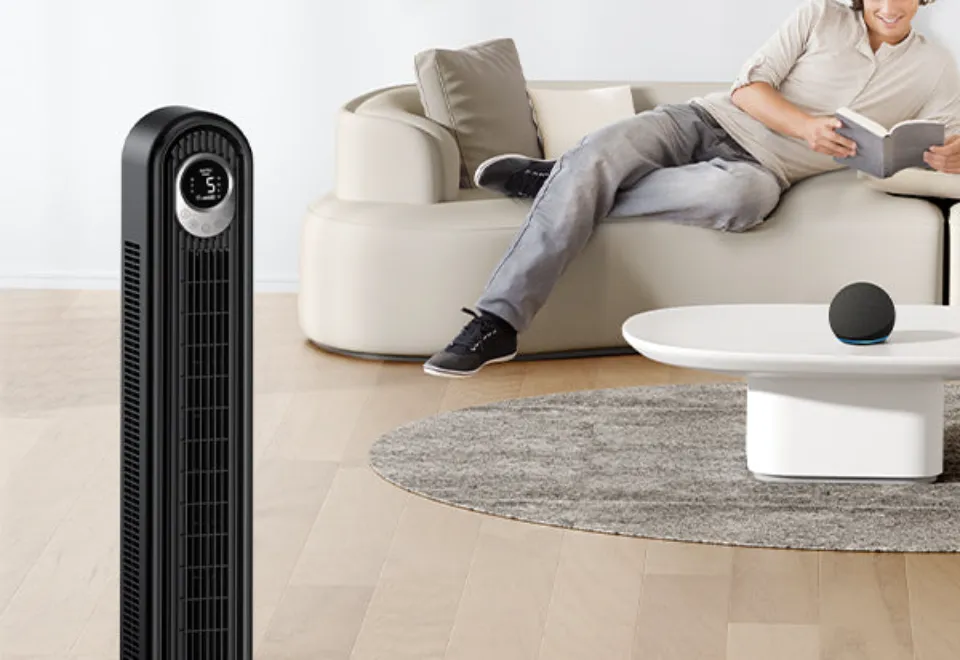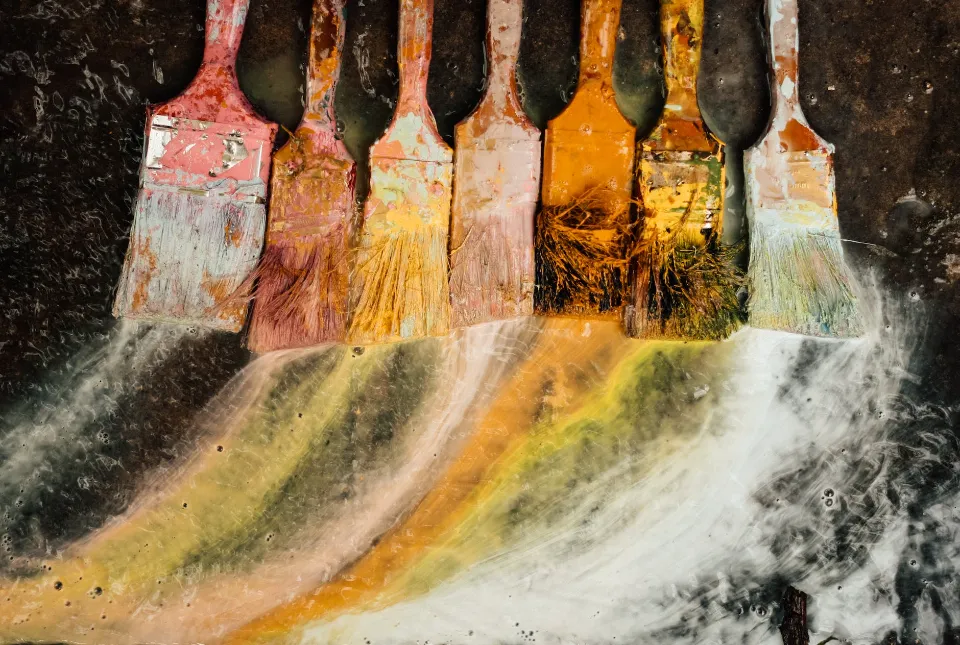With a few of the fairly easy techniques described below, you can get rid of the scuffs and grime. Before continuing to learn how to effectively clean wallpaper, be sure to take into account the type of wall covering you have and what it can withstand.
Table of Contents
Can You Wash the Wallpaper?
In fact, some types of wallpaper can be cleaned. To be exact, solid vinyl and fiberglass. These two are frequently chosen options due to their durability as well as their ability to withstand water and be cleaned. Solid vinyl wallpaper can last up to 20 years, so it’s definitely a wise investment to take into account, especially in high-humidity, quickly-soiled rooms of the house like the kitchen and bathroom.
The majority of synthetic materials can generally be maintained using wet-cleaning techniques, though this is not always the case. One of the reasons for this is their glossy protective coating. On the other hand, moisture can harm wallpaper made of natural materials like bamboo, fabric, plants, and the like. Both natural and synthetic materials can be found in wallpaper, so the latter is also true.
The best way to be certain is to look at the wallpaper label, which should list the composition and washable/non-washable characteristics. You can also look up information online if you can see the name of the manufacturer.
The Best Way To Clean Wallpapers

The time for planning and doing the work follows after you’ve decided what kind of wallpaper you’re going to clean. But don’t worry, we assure you that the procedure is simple, and we will outline it in detail below. The only thing that could take you longer is cleaning more specialized wallpaper materials, like textured wallpaper, and removing various stains.
What you will need:
- Duster or vacuum cleaner with brush application
- Rubber gloves
- Large container
- Clean soft sponge
- Microfibre cloth
- Mild colorless soap
- White vinegar
- Warm and cold water
- Gum eraser
- Dough
Important: It is best to test any cleaning technique you discover below on a small patch of the wallpaper before applying it to the entire surface. When testing the wallpaper, pick a hidden area, preferably in the bottom corners or a space occupied by furniture. Apply the cleaner to a small area, then wait up to 30 minutes to see if any discoloration, peeling, or other types of damage manifest themselves.
How To Clean Washable Wallpaper
Although washable wallpaper may seem easier to clean, there are still some things to think about and watch out for.
- Dust from top to bottom – You must start by giving the wallpaper a thorough dusting. In the alternative, once you start washing with water, you’ll have a huge mess. Utilizing a vacuum with a brush attachment is the quickest and easiest way to get rid of all accumulated dust. Although a duster is also an option, using a vacuum cleaner is the better choice. In order to eventually collect any dropped dust from the floor, start at the top and work your way down.
- Mix the soap and water – It is not necessary to use abrasive or aggressive chemical cleaners because the former could scratch the wallpaper’s protective layer and the latter could set off a reaction that would leave discoloration marks. To restore your wallpaper’s surface to its original shine and cleanliness, just use soap and lukewarm water. 1-2 tbsp of soap to 2 l of water. Add more water if you notice that the solution becomes too soapy.
- Wash every part of the wallpaper – We suggest that you divide the wall into two equal sections and work on each section separately. You should only lightly dampen the surface, not completely submerge it. Stains can be worked on later; don’t worry about them right now.
- Dry the surface with a clean microfibre cloth – After washing, it is best to quickly wipe the wallpaper surface dry. By doing so, you’ll be able to collect any remaining muck and grime and avoid streaks.
- Treat the stains – Wallpaper can be cleaned with vinegar, but only washable wallpaper can be cleaned with vinegar. Brown spots, mold, and greasy food can all be successfully removed with white vinegar. Two of its many fantastic qualities are its ability to destroy grease and kill bacteria and fungi. Later on, we delve into various staining techniques.
How To Clean Non-washable Wallpaper
These wallpaper varieties can’t be cleaned with water, so they need a little more care and consideration when it comes to cleaning. You are capable of handling this task, though.
- Remove the dust – Utilizing the vacuum’s brush extension, remove the dust from your wallpaper. Remember that wallpaper made of textured materials, velvet, or other types of fabric can be easily damaged. Therefore, when attempting to remove the dust, do not apply excessive pressure with the brush.
- Inspect the wallpaper – You can quickly search for stains after the dust has been eliminated. As you treat them later, keep those in mind.
- Lift stains and spots – Since non-washable wallpaper cannot be cleaned with spray cleaners or any other kind of liquid cleaner, this could prove to be a bit more difficult. You can try either of two different dry cleaning options. Treating the area with a dry cleaning sponge is one of them. It can get rid of smoke, soot, and other junk. On non-washable materials, it is completely safe to use and reusable. The second option is to use dough or another dry cleaning product that resembles putty to clean your wallpaper. Did you know that the original purpose of play-dough was to remove wallpaper? I know it sounds strange. You can simply roll the dough over the surface to remove the grime—who knew? It turns out that this is a suggested option for delicate wallpapers because it poses no risk to the fabric.

Removing Stains From Wallpaper
Let’s now concentrate more specifically on the wallpaper stain removal procedure, which is the most difficult aspect of the job.
Fingerprints And Food Grease
Unless you closely examine the wallpaper, you might not even notice the fingerprints. But once you do, you can try using a gum eraser to take them off the coated and smooth surface.
If that is ineffective or there are simply too many, handprints and grease-rich food stains from vinyl and other washable wallpaper can be removed with a mixture of vinegar and water. Remember that vinegar dissolves grease?
The heat from an iron or a blow dryer can safely remove the stain from more delicate materials. We advise the blow dryer method for a number of reasons, just to be safe. On the one hand, it is simpler to control how much heat you are applying to the wallpaper, and on the other hand, there is no chance of leaving an unsightly burn mark in the shape of an iron on your wall.
You can try using the blow dryer to melt the stain and paper towels to wipe it away. If that doesn’t work or you’re determined to try the iron method, place a cloth over the stain and heat it with the iron. The oily substance can be transferred to the cloth in this manner.
Mould And Dark Spots
If you notice any dark spots on the wallpaper, they were probably brought on by water or mold. Act now to stop them from spreading because neither should be disregarded.
To find and permanently fix any leaks in the house, you’ll probably need the help of experts. Regarding mold, in some cases, a solution of vinegar and water may be sufficient to eliminate it as well as some cigarette smoke-induced dark spots. Again, this works best on wallpaper made of vinyl or fiberglass that can be cleaned with liquid cleaners.
However, a bleach and water solution will work better if there has been a significant buildup of black mold and you are dealing with it. However, bleach shouldn’t be used on dark-colored wallpaper because it can make materials whiter. Start with a weak solution of 1l of water and just 1-2 tbsp of bleach as well. Before you apply more of it, you should definitely test it on a less noticeable area to see how it responds.
Crayon
Do not immediately become alarmed if your children decide to use the wallpaper as their drawing surface. There is a way to fix this, so it’s not the end of the world. There are many cleaning methods you can try, but using heat is probably the safest and most efficient one. By doing this, you have a better chance of removing the crayon in its entirety from the wallpaper without having to scrub very hard.
A clean rag or piece of paper towel can be used to absorb the stain after using the iron or blow dryer method mentioned above to remove it.
Use a plastic scraper to carefully remove the extra material from the wall to begin. Continue using the blow dryer to melt the remaining crayon. If your wallpaper permits it, wash any visible leftover stains with soap and water after carefully wiping.
Dos And Don’ts Of Cleaning Wallpaper
Here are a few crucial wallpaper cleaning guidelines to keep in mind so that you can achieve satisfying results, avoid critical errors, and possibly avoid wallpaper replacement.
Dos
- Prior to beginning any cleaning, always check the condition of the wallpaper. This can assist you in finding the material and any damage or stains that need to be cleaned up.
- In terms of identifying the material, always search for a label, brand, or other identifiers that could point you in the direction of cleaning and maintenance guidelines for the specific product.
- When stains come from food or beverages with a lot of colors, like coffee or wine, clean them up right away. They won’t be easy to lift once they embed themselves in the wallpaper.
- Only washable and long-lasting wallpaper should be treated with white vinegar, bleach, soap, and water.
- At least every three months, dust your wall coverings. No less than once per year should you deep clean and treat the surface. The kitchen, bathroom, and kids’ room are high-risk areas that can benefit from more frequent cleaning.
Don’ts
- Regardless of whether the wallpaper is washable or not, never use abrasive cleaning products to clean its surfaces.
- If you are unsure of the wallpaper’s composition, wait before beginning to clean it. You might permanently harm it.
- On wallpaper that you are aware is delicate and cannot be washed, avoid taking a chance by using water or water-based cleaners. Despite how obvious it may seem, people occasionally choose to experiment anyway, and the outcome may not be pretty.
- Speaking of experiments, don’t forget to test each cleaning technique on a small, inconspicuous area of the wall before completing the full cleaning.
FAQs
1. Brown stains have appeared where water has soaked through the wallpaper in my bedroom close to a window. Can they be removed without causing harm?
The majority of water and mold damage can be repaired by using a dish detergent/vinegar solution that is mild and heavily diluted. Inspect a small area first and make sure to wring out the dampened cloth.
2. How can I best get cigarette smoke off of my wallpaper?
Vinegar should be dripped or squirted onto smoke stains to remove them. Rub the wallpaper with a cloth until the stain comes off.
3. How can I get wood smoke stains out?
To get rid of these stains, use a solution of soapy water. Rubber alcohol ought to be used if this doesn’t work.





